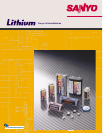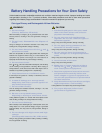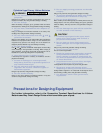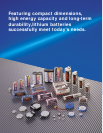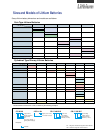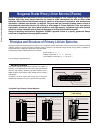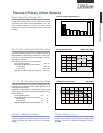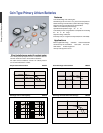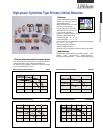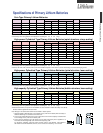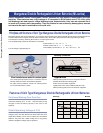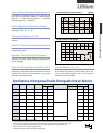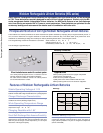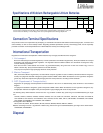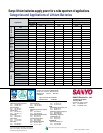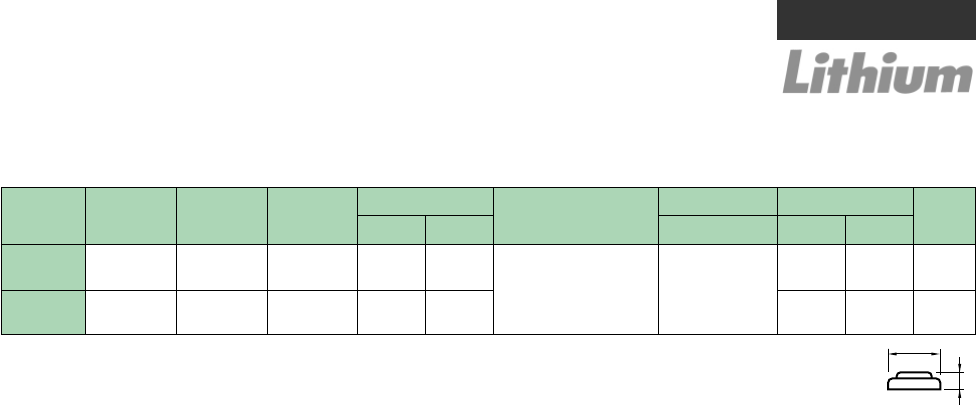
Sanyo meets various user requirements by developing an extended line of batteries with different terminal designs (tabs, connectors and
other terminals) as well as various battery holders. Regarding standard specifications and key circuit design points, see the separately
provided "Connection Terminal Specifications for Lithium Batteries and Key Circuit Design Points."
Regulations for international transportation of lithium batteries may be largely classified into three categories.
1. Air transport
Based on DGR (Dangerous Goods Regulations) of ICAO (International Civil Aviation Organization), IATA (International Air Transport
Association) has determined transport regulations. The regulation states that lithium batteries are considered not dangerous if they
meet the following requiremints:
Each bare cell with a solid cathode must contain 1.0g (Assembled battery using more than 2 cells must contain 2.0g) or less of
lithium or lithium alloy. (Sanyo's lithium batteries are all solid cathodes.)
They may be transported in rigid packaging with short-circuit protection.
2. Marine Transport
IMO (International Marine Organization) has determined transport regulations based on IMDG (International Marine Dangerous
Goods). The judgement standard of dangerous goods is based on DGR of ICAO. When the batteries are not regarded as dangerous
goods, they should be transported in rigid packaging with short circuit protection, according to IATA standards.
3. DOT (Department of Transportation)
Regulations for packaging and transportation of lithium batteries in the U.S.A. are determined by Code 49 CFR173. 185 of Federal
Register.
The judgement standard of dangerous goods corresponds to DGR of ICAO. When the batteries are not regarded as dangerous, any
transportation method is acceptable if they are transported in rigid packaging with short circuit protection.
The following Sanyo lithium batteries contain less than 1.0g of lithium or lithium alloy (under 2.0g for assembled batteries) per single
cell.
CR1220, CR2016, CR2025, CR2032, CR2430, CR2450, CR-1/3N, 2CR-1/3N, CR15270, CR15400, CR17335, CR17335E-R,
CR17335HE-R, CR17450E-R, CR17450HE-R, CR2, CR123A, CR-P2, 2CR5, CR-V3, CR14250SE, CR12600SE, CR17335SE,
CR17450SE, CR14250SE-R, CR17335SE-R, CR17450SE-R
Rechargeable Lithium Batteries
ML414, ML414R, ML421, ML614, ML621, ML1220, ML2016, ML2020, ML2430, NBL414, NBL621
Batteries containing more than 1.0g of lithium or lithium alloy (more than 2.0g for assembled batteries) per single cell are shown below.
CR23500SE, CR23500SE-R
Connection Terminal Specifications
International Transportation
Disposal
Specifications of Niobium Rechargeable Lithium Batteries
1 Nominal capacity is determined to an end voltage of 1.0V when the battery is allowed to discharge at a standard current level at 23 .
2 Current value is determined so that 50% of the nominal capacity is obtained with an end voltage of 1.0V at 23 .
3 Current value for obtaining 1.0V cell voltage when 15sec. pulse applied at 50% discharge depth at 23 .



